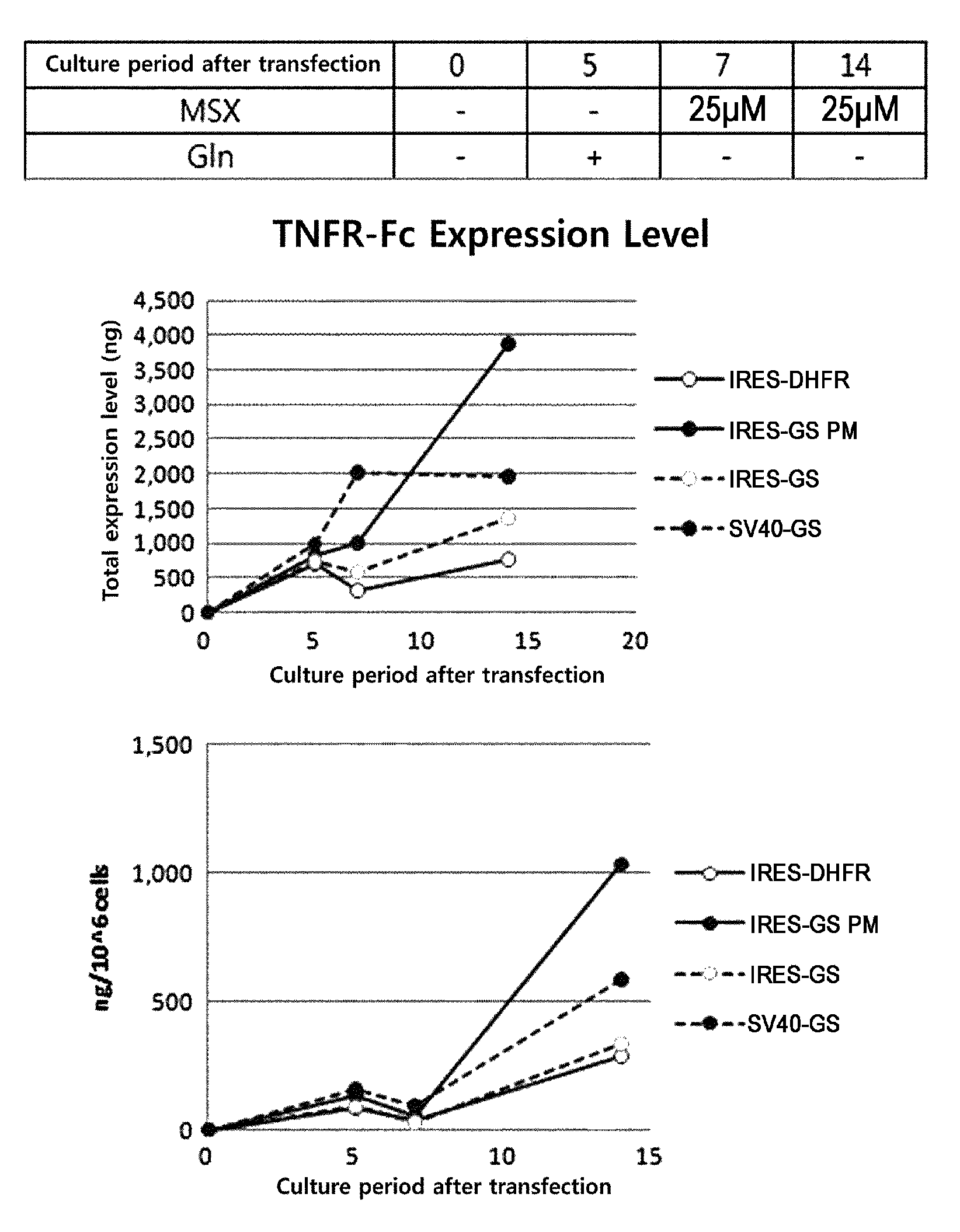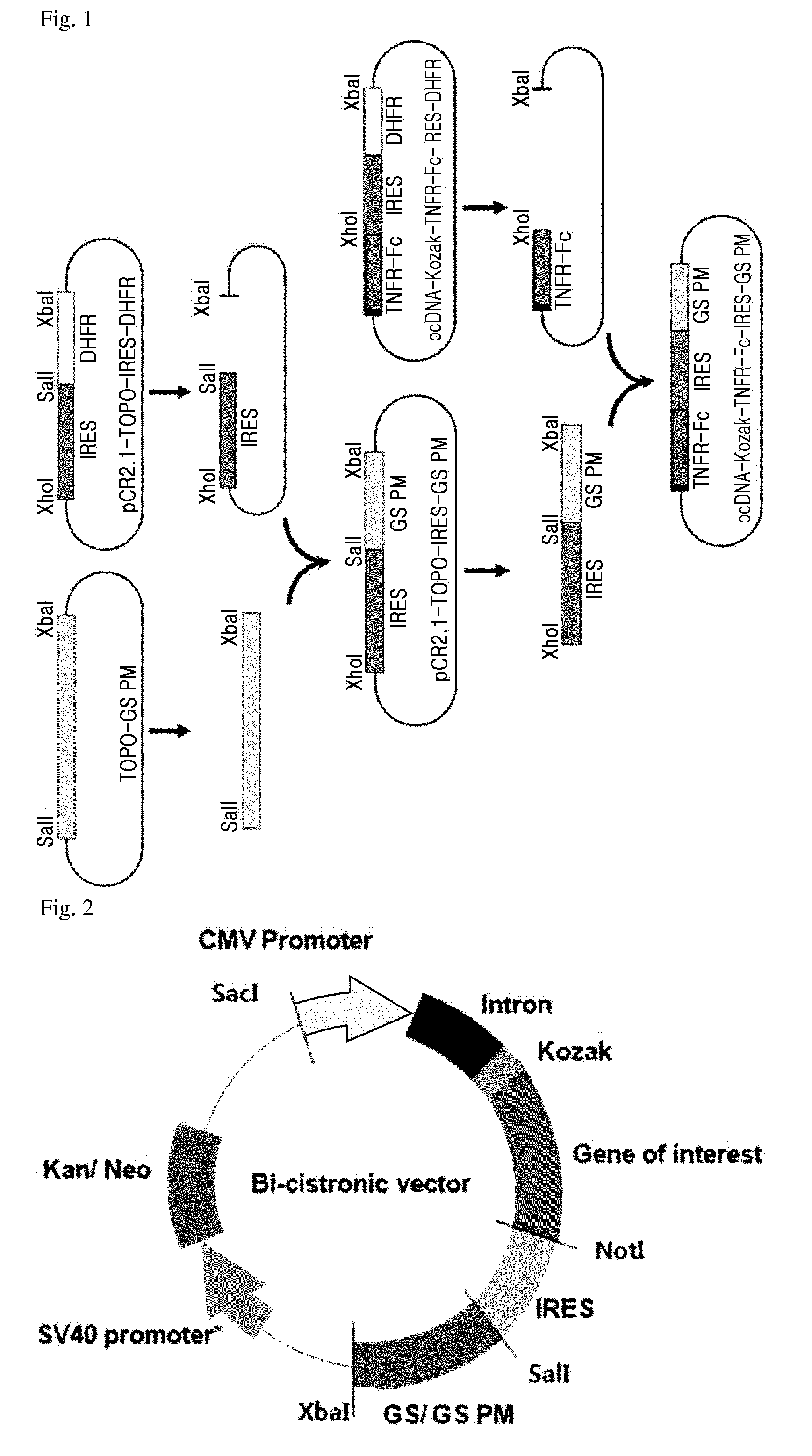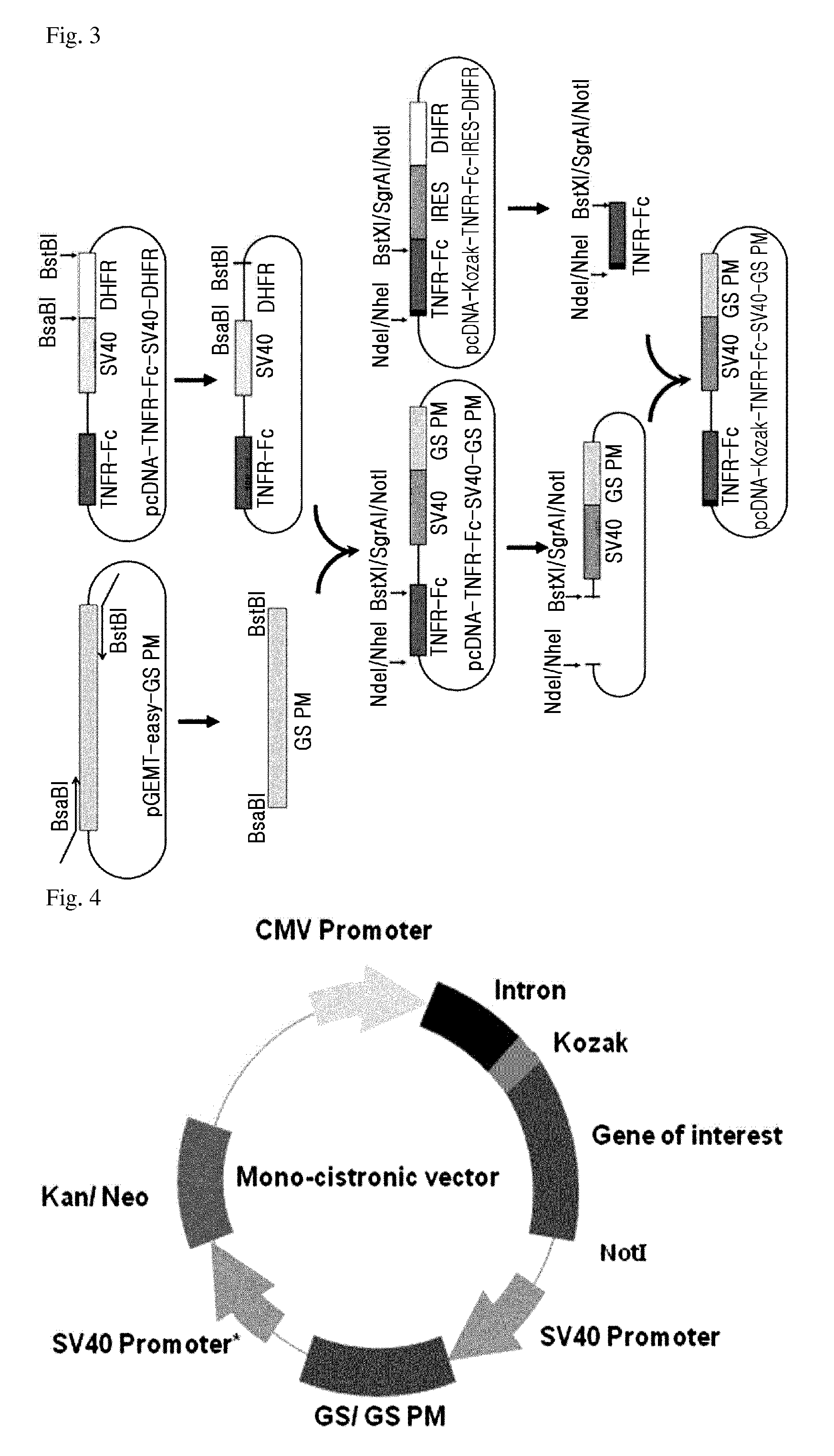Expression vector comprising a polynucleotide encoding a modified glutamine synthetase and a method for preparing a target protein employing the same
a technology of modified glutamine and polynucleotide, which is applied in the direction of viruses/bacteriophages, ligases, peptides, etc., can solve the problems of significant low expression yield and difficulty in scale-up of production, and animal cell culturing is not suitable for a large-scale production of therapeutic antibodies,
- Summary
- Abstract
- Description
- Claims
- Application Information
AI Technical Summary
Benefits of technology
Problems solved by technology
Method used
Image
Examples
example 1
Synthesis of TNFR-Fc Fusion Protein-Encoding Gene
[0053]In order to examine the expression level of a recombinant protein produced using a recombinant protein expression vector system, of the present invention, a TNFR-Fc fusion protein was used as a representative target protein.
[0054]The fusion protein-encoding gene (SEQ ID NO. 5) was synthesized by GeneArt Inc., so as to meet the following criteria: (1) it must include a TNFR signal sequence (2) it must express the TNFR amino acids at position 1 to 235 (3) it must be codon-optimized for CHO cells in order to be transfected into CHO cells (4) it must have a NheI restriction site at 5′-end and a NotI restriction site at 3′-end, considering insertion into a pcDNA3.1 vector of Invitrogen.
[0055]The nucleotide sequence of the synthesized fusion protein-encoding gene was finally analyzed using the VectorNTI program.
example 2
Construction of Expression Vector Comprising TNFR-Fc Fusion Protein-Encoding Gene
[0056]In the present invention, a DHFR system that is a common recombinant protein expression system was utilized as a control for the recombinant protein expression system using the modified GS protein. For this, a hamster dihydrofolate reductase (DHFR) gene was cloned as detailed below:
[0057]In order to obtain the hamster DHFR gene, a pSVA3 vector (ATCC 77273) having a mutant type of hamster DHFR gene was purchased, and then a wild type of DHFR gene was obtained by performing point mutation using the DHFR gene as a template. In addition, an IRES sequence was obtained by PCR from a Clontech vector (Cat. #6029-1, PT3267-5) having the corresponding DNA sequence.
[0058]The obtained DHFR gene and internal ribosome entry site (IRES) sequence were cloned into a pCR2.1 vector so as to construct a pCR2.1-IRES-DHFR expression vector.
[0059]Each of the TNFR-Fc-inserted pcDNA3.1-TNFR-Fc vector obtained in Example 1...
example 3
Preparation of a Modified GS Gene
[0061]In order to acquire a modified GS gene which has an increased sensitivity to GS inhibitor as compared to wildtype GS and thus can be applied to the target protein expression system, the following procedures were performed.
[0062]To acquire the modified GS gene, a hamster cell line, CHO DG44 (Invitrogen, 12609-012) was cultured, and then total RNA was isolated using a TRIZOL reagent (Invitrogen). After that, RT-PCR was performed using the obtained total RNA so as to obtain cDNA. PCR (25 cycles of denaturation at 94° C. for 5 minutes; denaturation at 94° C. for 30 seconds, annealing at 50° C. for 30 seconds, elongation at 72° C. for 90 seconds; and elongation at 72° C. for 7 minutes) was performed using the obtained cDNA as a template and a pair of primers (GS SalI-F primer and GS XbaI-R primer) for acquisition of the following GS PM gene, so as to obtain a PCR product.
[0063]
GS SalI-F (Forward primer):(SEQ ID NO. 6)5′-gtcgacatggccacctcagcaagttccc-...
PUM
| Property | Measurement | Unit |
|---|---|---|
| concentration | aaaaa | aaaaa |
| time | aaaaa | aaaaa |
| elongation | aaaaa | aaaaa |
Abstract
Description
Claims
Application Information
 Login to View More
Login to View More - R&D
- Intellectual Property
- Life Sciences
- Materials
- Tech Scout
- Unparalleled Data Quality
- Higher Quality Content
- 60% Fewer Hallucinations
Browse by: Latest US Patents, China's latest patents, Technical Efficacy Thesaurus, Application Domain, Technology Topic, Popular Technical Reports.
© 2025 PatSnap. All rights reserved.Legal|Privacy policy|Modern Slavery Act Transparency Statement|Sitemap|About US| Contact US: help@patsnap.com



